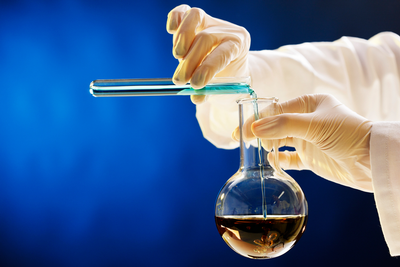EPA Seeks Green Chemistry Nominees
TUESDAY, NOVEMBER 1, 2016
The federal government is looking for potential awardees for its annual program honoring new chemical technologies, such as those used in paints and coatings, that are helping to keep the planet clean and safe.
The U.S. Environmental Protection Agency is seeking nominations for the 2017 Presidential Green Chemistry Challenge Awards, which recognize companies or institutions that have developed a new process or product that helps to protect public health and the environment.

 |
| © iStock.com / RapidEye |
|
The U.S. Environmental Protection Agency is calling for nominations for its 2017 Presidential Green Chemistry Challenge Awards; nominations for innovative technologies featuring greener chemicals and products are due to the agency by Dec. 31. |
“Green chemistry innovations couple scientific brilliance with the entrepreneurial spirit that are helping to solve environmental challenges,” Jim Jones, assistant administrator for EPA's Office of Chemical Safety and Pollution Prevention, said in the call for submissions.
“This year, we look forward to receiving another round of outstanding nominations to continue the tradition of making manufacturing processes and everyday products safer to use.”
Nominations for innovative technologies featuring greener chemicals and products are due to the agency by Dec. 31. Self-nominations are typical, according to the agency.
Green Chemistry Advancements
Green chemistry is described as the design of chemical products and processes that reduce the generation and use of chemicals that are hazardous to the environment and people’s health.
The awards recognize chemical technologies that incorporate the principles of green chemistry into chemical design, manufacture, and use.
Companies recognized for their award-winning technologies have included:
-
Hybrid Coating Technologies/Nanotech Industries – 2015 – Production of polyurethanes for coatings and foam without the use of isocyanates;
-
The Dow Chemical Company – 2013 – Polymer-titanium dioxide (TiO2) composites reduce the amount of TiO2 required in paint to achieve coverage and opacity;
-
The Sherwin-Williams Company – 2011 – Recycled poly(ethylene terephthalate) (PET) soda bottle plastic and acrylic monomers are among the feedstocks for water-based alkyd–acrylic dispersions in paints and coatings;
-
The Sherwin-Williams Company – 2011 – low concentrations of volatile organic compounds (VOCs) in water-based alkyd–acrylic paints are safer for painters and those who occupy recently painted areas;
-
The Procter & Gamble Company; Cook Composites & Polymers Company (Chempol technology acquired by Arkema Coating Resins) –2009 – Sefose oils—sucrose esterified with fatty acids—replace volatile organic solvents in alkyd paint formulations; new Chempol MPS alkyd resins have higher renewable content than traditional alkyd resins;
-
Cargill Incorporated – 2007 – Polyurethane foams can now be made with biobased BiOH polyols instead of petroleum-based polyols;
-
Archer Daniels Midland Company – 2005 – Archer RCTM, a nonvolatile, reactive coalescent (propylene glycol monoesters of sunflower oil fatty acids) to replace VOCs in latex paint;
-
PPG – 2001 – Yttrium as a substitute for lead in cationic electrodeposition coatings; and
- Bayer Corporation, Bayer AG – 2000 – Two-component waterborne polyurethane coatings replace most or all of the VOCs and HAPs (hazardous air pollutants) used in conventional solvent borne polyurethanes.
Since the inception of the program in 1996, EPA says it has received more than 1,700 nominations and presented awards to developers of 109 technologies.
According to the agency, this program has helped cut hazardous solvents and chemicals by more than 826 million pounds, saved 21 billion gallons of water, and eliminated 7.8 billion pounds of carbon dioxide releases to the air.
Categories and Entry
In June 2017, EPA anticipates giving six awards to outstanding green chemistry technologies in these categories:
- Focus Area 1: Greener Synthetic Pathways;
- Focus Area 2: Greener Reaction Conditions;
- Focus Area 3: The Design of Greener Chemicals;
- Small Business, for a technology in any of the three focus areas developed by a small business (i.e., one with annual sales of less than $40 million);
- Academic, for a technology in any of the three focus areas developed by an academic researcher; and
- Specific Environmental Benefit: Climate Change, for a technology in any of the three focus areas that reduces greenhouse gas emissions.
More information on eligibility requirements, how to enter, selection criteria and the selection process is available at www.epa.gov/greenchemistry.
Tagged categories: Awards and honors; Coating chemistry; Coatings Technology; Environmental Protection Agency (EPA); Green chemistry; Green Chemistry Awards; Green coatings; Health and safety; Polyurethane







